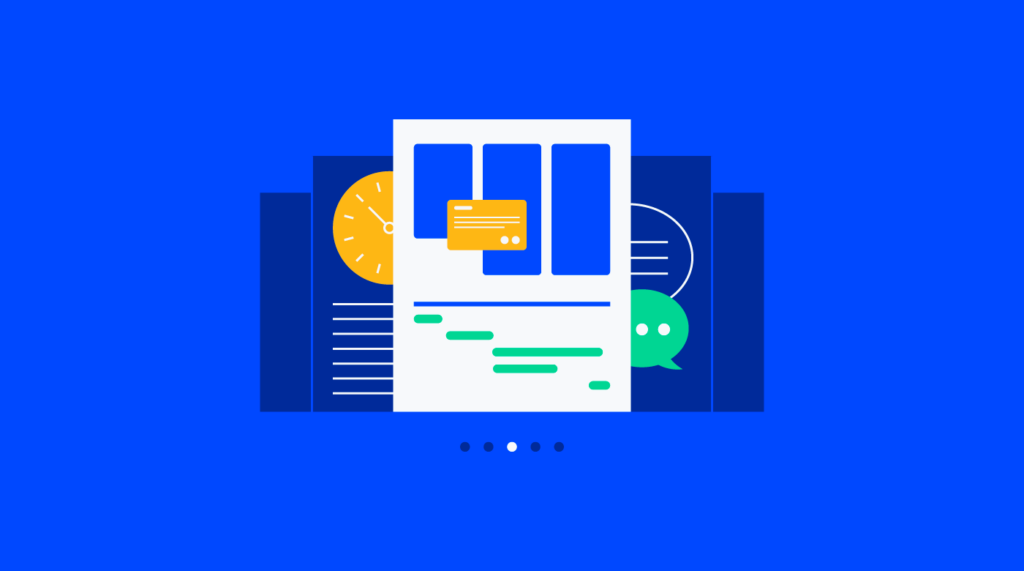Nowadays, there are more than a dozen project management software that are jacks of all trades and offer any feature you can think of, from task management to resource management, collaboration, dashboards, and even project financial management.
This article simplifies the process by categorizing project management software into five main types: traditional, agile, collaborative, resource management, and open-source.
This guide is an essential read for anyone looking to make an informed decision in selecting the most suitable project management software for their unique business needs.
1. Traditional Project Management Software
Traditional project management software is the type that focuses on the project life cycle and supports you throughout that cycle. Therefore, you have features that will help you define your project scope, create a schedule, assign tasks, and track project progress.
The main features of this type of software include:
- Task management: Normally displayed in a list view, this is a place where you can define the project tasks, set due dates, deadlines, milestones, and dependencies, assign resources to tasks, and monitor progress.
- Gantt charts: Visual representation of your projects in a timeline. This view is normally a drag-and-drop interface that makes it intuitive to create new or alter current project conditions. This view will display additional information like the critical path for the project, so you know the key moments when you can’t afford to be delayed.
- Project portfolio management: A few project management tools will go the extra mile and give you access to portfolio views. These are helpful boards that provide a quick status on different project initiatives across your portfolio. Information like this is beneficial to decision-making.
Examples of project management software include Microsoft Project, Primavera P6, and Hive.
2. Agile Project Management Software
Agile project management software has its main focus on supporting agile methodologies like Scrum and Kanban. Therefore, you can find views that support these types of software and help you see sprints, epics, and stories in one place.
The main features of this type of software include:
- Kanban boards: Vertical swimlane-style view where cards represent tasks to be done and columns represent workflow stages. Therefore, you can have a column for your backlog, another for the tasks being worked on in the current sprint, and another for completed work.
- Workflow Automation: A common feature of this type of software as it helps streamline work. Automations can reduce complexity in complex projects by sending notifications across team members depending on a task’s status.
- Real-time dashboards: These dashboards display information about your team, such as the tasks they have assigned, how many have been completed, and team velocity.
- Client portals: Client portals give external access to your projects and allow different stakeholders to view your project and even interact with the team according to your predefined permissions.
Popular tools in the agile project management software category include Jira, Trello, and Asana.
3. Collaborative Project Management Software
These tools focus on making collaboration and communication easy among team members. This might actually be the hardest category to differentiate since all tools provide some sort of in-app communication.
The main features of this type of software include:
- Collaborative docs. These are wiki-style documents where your team can co-create documentation and teamwork-related activities.
- Real-time messaging. Unlike Slack which is a tool that lives outside of your projects, this type of messaging occurs within the software. Therefore your team can engage in conversations regarding a specific task, deliverables, or any work item.
- Proofing. This feature is particularly useful for teams that use cloud-based software to review collateral and ask for client feedback. This feedback can be in the form of comments and approvals.
Examples of collaboration tools for project management include Basecamp, Wrike, and Miro.
4. Project Resource Management Software
Resource management is the project management software type focused on assisting your project scheduling and project planning from a human resource perspective.
Web-based tools of this type are different from team collaboration software because rather than focusing on teamwork, they focus on the team’s work. This helps you with work management across your team.
The main features of this type of software include:
- Time Tracking & Timesheets: This is a useful feature to keep track of what your team is spending their time on. Time tracking is useful for small teams, freelancers, and big companies alike. Also, any professional services organization that needs to report the time spent on tasks in their invoicing.
- Resource allocation: This is a feature that will show you the tasks and subtasks assigned to your team and whether they can take on more work or not. Resource allocation is usually a percentage out of 100 and allows you to balance work throughout the project team.
- Mobile app. This is common in tools that provide time-tracking features and very useful for teams that have members who are on the go. These apps normally have an easy and user-friendly interface in which recording time requires a few taps only.
Popular resource management software options include Runn, Smartsheet, and Float.
5. Open-source Project Management Software
Open-source software is focused on giving you access to all of the features mentioned above (collaboration tools, resource management, file sharing, reporting, agile views, etc), but in a free plan. This type of project management app can be great option for small businesses on a budget. However, if pricing is not a problem, these tools also have paid plans that offer more features than commercial tools for a fraction of the price.
This type of software is often preferred by organizations with in-house development capabilities as the free versions of the software are community supported and require tweaks to adapt the tool to your needs.
Popular open-source project management tools include OpenProject, ProjectLibre, and Odoo.
FAQs About Project Management Software
What is the best project management software?
The best project management software is the one that includes all the features and capabilities you and your team need to complete projects successfully.
This might sound like a cop out, but as I mentioned, today’s tools have a mix and match of the features mentioned in each of the categories I discussed. Therefore, you need to decide which features to pay attention to and which will most benefit you.
To get you started with your research, I thought I would share a quick list of the best project management software.
What are the Best Types of Project Management Software for Different Types of Businesses?
There are many different types of project management software designed to suit businesses of every shape and size. For example, Evernote has a popular project management app that syncs with computers and other devices, while Basecamp is popular with small companies with basic needs.
The best type of software project tool for your business will depend on your size and specific needs. Look for the right tool for your portfolio management—what’s best for one company may be entirely unsuitable for yours. Consider your business’s goals and challenges, and then select the project management tool that serves them.
How much do Different Project Management Software Tools Cost?
It really depends on your needs. Post-its, building spreadsheets or going to someone’s desk to nag them about their deliverables have little to no cost. Software on the other hand can be cheap or really expensive.
The cost of the tool will be directly linked to the number of people that need to use the software. If you have a small team (less than 5 people), you will be able to find free versions of some software that will suffice. However, as your team grows or you require more features, the cost will change to a fixed amount per user per month, in most cases.
If you reach the point where you need to pay for software, I recommend you look for free trials and test different options before making a decision.
Need expert help selecting the right Project Management Software?
If you’re struggling to choose the right software, let us help you. Just share your needs in the form below and you’ll get free access to our dedicated software advisors who match and connect you with the best vendors for your needs.
Final Thoughts
Check out our list of the best project management software and get started on finding the right one for you and your team's needs.



